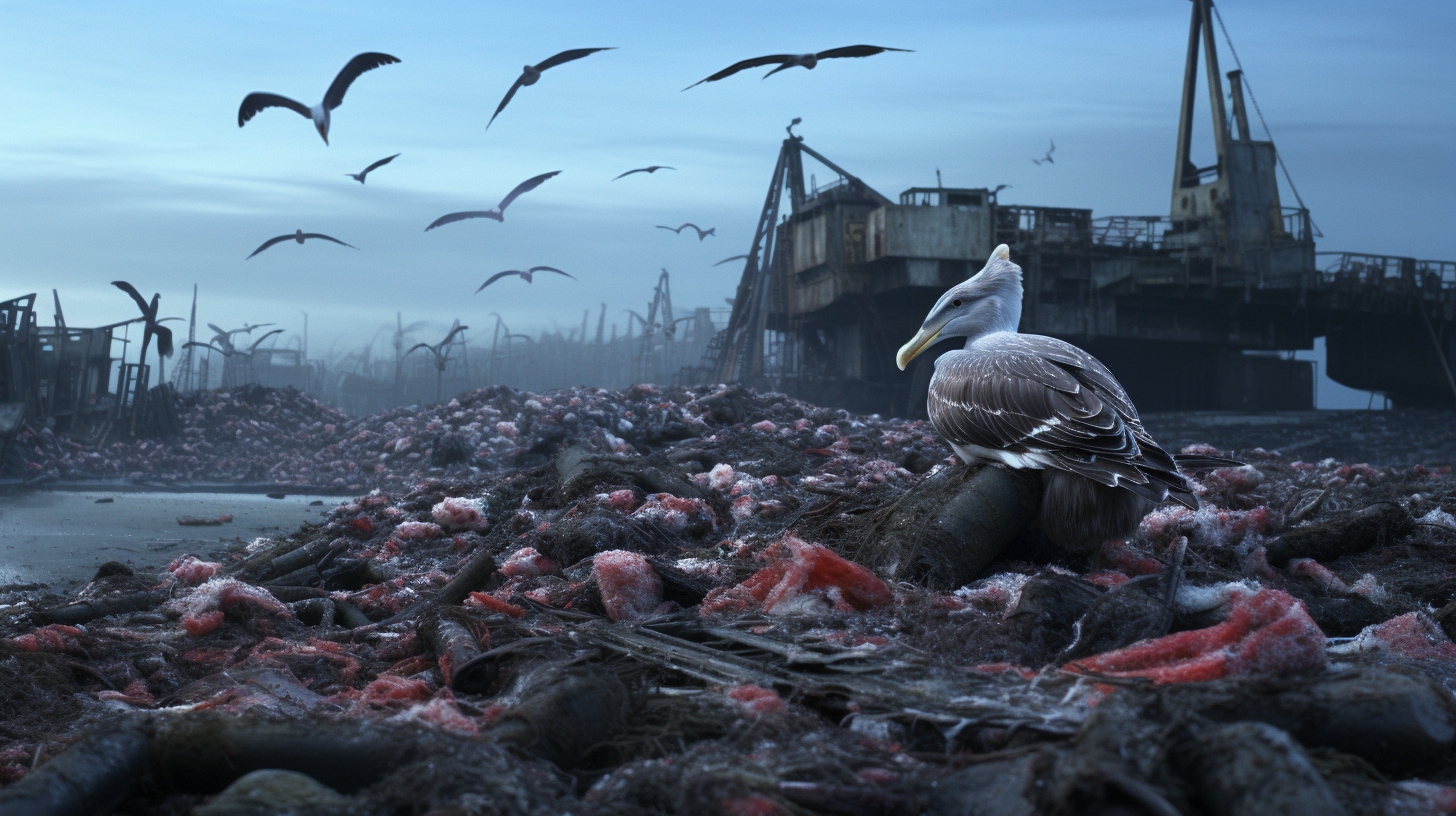The vast, sprawling ocean, the last frontier, has whispered to us a sorrowful tale through the cry of the last albatross. As if the very heart of nature had skipped a beat, the silence that follows the call is haunting – an echo of existence that once ruled the skies and mastered the seas, now a mere whimper against the roaring tide of environmental collapse.
In this desolate panorama, the albatross – a sentinel of ecological balance and global health – finds itself in a dire opera where the curtain call nears with each passing day. As our oceans become graveyards of plastic and the air a miasma of pollutants, these majestic beings are the harbingers of a grim epoch, their plight a spectacle capturing the essence of our planetary play.
The albatross, whose life is etched upon the high seas and stormy winds, now contends with a far crueler storm: human indifference and avarice. As the earth buckles under rising temperatures and ocean acidification, these creatures, once the undaunted navigators of Poseidon’s realm, are ensnared in the very definition of a dystopia – not just one fashioned by literature or the silver screen, but a reality fabricated by years of ecological neglect.
In this narrative, we explore the cascading consequences that have led the albatross to its knees. Unseen yet alarmingly present, the parallels between the fate of these magnificent birds and the vanishing web of pollinators recently brought to light in ‘Ghost Networks: The Vanishing Web of Pollinators’ are striking. Both are pivotal players in an intricate ecological puzzle, each species’ decline an ominous portent of the earth’s unraveling seams.
Biologists have cast an anguished gaze upon the albatross populations, with data painting a portrait of decline so steep it skims vertical. From the ingestion of plastic waste mimicking their prey to the entanglement in longline fishing lines, their suffering is a mirror of our societal failures. Their fate, intertwined with the very ecosystems they grace, is a bellwether for the horrors that arise when man turns custodian to tyrant.
The tragic irony does not escape us – that the albatross, an immortal symbol of good luck and hope to sailors of old, now serves as a dark omen spotlighting our environmental crimes. Like coal miners’ canaries, their dwindling numbers beseech a heed we’ve yet to give.
Though conservation efforts flutter like tattered flags on a desecrated battlefield, they are, in the landscape we paint, tantamount to bailing out the ocean with a thimble. Dreams of a technology deus ex machina fade before the staggering complexities of natural ecosystems. Expert voices fade into the cacophony of the cataclysm, foretelling a tomorrow marred by the shadows of species we’ve let slip into oblivion.
The future might have been replete with the many winged-years of the albatross, their migratory tales mapping the health of our planet. Yet, as melancholy as it is, the narrative we find ourselves in is not one of preservation or resurgence, but an elegy – a final homage to the natural marvels tortured by our own hand.
And so, we listen to the cry of the last albatross, a lament for the skies that once bore witness to their graceful ballet. It calls not to a past we can mend, but to a present we have sculpted through relentless negligence. Tomorrow, we fear, may arrive with a tranquility not of peace, but of absence – the silence of an epoch passed and the forlorn cry of our last albatross.
